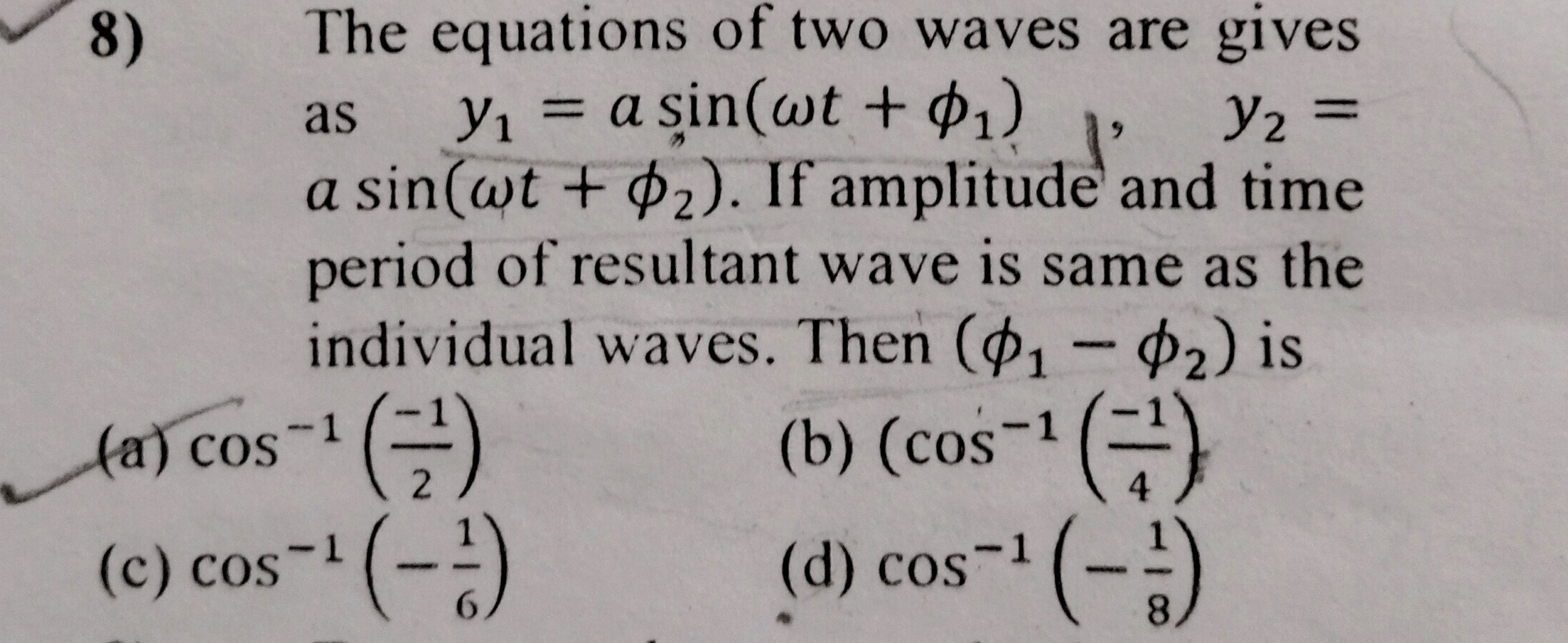Question
Question: The equations of two waves are gives as $y_1 = a \sin(\omega t + \phi_1)$, $y_2 = a \sin(\omega t + ...
The equations of two waves are gives as y1=asin(ωt+ϕ1), y2=asin(ωt+ϕ2). If amplitude and time period of resultant wave is same as the individual waves. Then (ϕ1−ϕ2) is

A
cos−1(−21)
B
(cos−1(−41)
C
cos−1(−61)
D
cos−1(−81)
Answer
cos−1(−21)
Explanation
Solution
The resultant wave from the two waves is given by:
y=y1+y2=asin(ωt+ϕ1)+asin(ωt+ϕ2)Using the sine addition formula:
y=2acos(2ϕ1−ϕ2)sin(ωt+2ϕ1+ϕ2)The amplitude of the resultant wave is 2acos(2ϕ1−ϕ2).
Since the given amplitude of the resultant wave is the same as that of the individual waves (i.e. a):
2acos(2ϕ1−ϕ2)=a⟹cos(2ϕ1−ϕ2)=21Thus:
2ϕ1−ϕ2=3π⟹ϕ1−ϕ2=32πNote that cos−1(−21)=32π.
Therefore, the phase difference (ϕ1−ϕ2) is:
cos−1(−21)